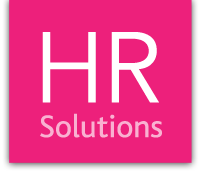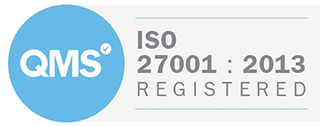
The Coronavirus Job Retention Scheme has been extended until the 30 April 2021.
The scheme allows employers to furlough their staff for any amount of time and any work pattern. For example:
- An employee can be furloughed for 100% of their usual hours or
- The employee works some of their normal hours with the remaining hours being placed on furlough.
Throughout the period of furlough, employers (if eligible) can claim the government grant. The government will pay 80% of wages for the normal hours that are not worked. For those who undertake some work, then this will be paid at the normal rate of pay as per the contract of employment.
Eligibility
- You can only claim for furloughed employees that were on the payroll on the 30 October 2020.
- A PAYE RTI submission must have been submitted to the HMRC between 20 March 2020 and 30 October 2020.
- Employees can be on any kind of contract including full time, part time, agency, flexible or zero hours.
- The scheme also covers employees who were made redundant or stopped working for you on or after 23 September 2020 and you made an RTI submission to HMRC between 20 March and 30 October 2020. The ex-employee can request that they be re-employed and placed on furlough.
- Employees who are unable to work due to caring responsibilities arising out of COVID-19 can be furloughed; this can include caring for children or vulnerable individuals within the household.
- Employees who are clinically extremely vulnerable, or at the highest risk of severe illness from COVID-19 can be furloughed.
- Employees who are working on reduced hours or for reduced pay will not be eligible.
Full details on who you can claim for is available in the government guidance.
Process
- Employers need to discuss with their staff and make any changes to the employment contract by agreement.
- When making decisions relating to furlough, equality and discrimination laws will apply in the usual way.
- To claim the subsidy, employers need to write to employees confirming they have been furloughed and keep a record of the communication for 5 years.
- Employers are not compelled to furlough employees.
- There is no minimum furlough period, however, the period that you claim for must be for a minimum of seven calendar days and the claim period must start and end within the same calendar month.
Payment
Currently, employers will receive a grant from HMRC to cover the lower of 80% of an employee’s regular wage or £2,500 per month plus the associated Employer National Insurance contributions and minimum automatic enrolment employer pension contributions on that subsidised wage. Fees, commission, and bonuses should not be included.
Employers must pay their employee the lower of 80% of their regular wage or £2,500 per month. An employer can choose to top up an employee’s salary beyond this but is not obliged to under this scheme.
As individuals are only entitled to the National Living Wage (NLW)/National Minimum Wage (NMW) for the hours they are working, the regulations do not apply for furloughed hours. However, the exception is if they are required to undertake online training courses while being furloughed. If so, they must be paid at least the NLW/NMW for the time spent training, even if this is more than the 80% of the wage that will be subsidised.
Calculating the wage
Working out what 80% of your employee’s usual wage is will differ depending on how their wages are usually processed.
- For employees on a fixed salary who were eligible for furlough before 1 November 2020. For full time and part time salaried employees this will be calculated using their gross salary as it was before 19 March 2020. This includes payments due under their contract, for example basic salary, contractual commission and contractual allowances. This is for those whom you have already made a valid Coronavirus Job Retention Scheme (CJRS) (furlough) claim for, in a claim period ending anytime on or before 31 October 2020.
- For employees on a fixed salary who were not eligible for furlough before 1 November 2020. For full time and part time salaried employees this will be calculated using their gross salary as it was before 31 October 2020. This includes payments due under their contract, for example basic salary, contractual commission and contractual allowances.
- For employees not on a fixed salary who were eligible for furlough before 1 November 2020. Their furlough pay will be paid at the higher rate, of either the same month’s earnings from 2019 or based on their average monthly earnings from the 2019-2020 tax year. This is for those whom you have made a valid CJRS claim for, in a claim period ending anytime on or before 31 October 2020.
- For employees not on a fixed salary who were not eligible for furlough before 1 November 2020. Their furlough pay will be 80% of their average wages paid between 6 April 2020 (or later if your employment started after) and the first day spent on furlough on or after 1 November 2020.
See the government guidance for these rules.
Employees
The wages of furloughed employees will be subject to Income Tax and National Insurance as usual. Employees will also pay automatic enrolment contributions on qualifying earnings unless they have chosen to opt-out or to cease saving into a workplace pension scheme.
Once the government closes the scheme employers will have to decide if they have work for the employees to return to. If not, it may be necessary to consider termination of employment (redundancy).
Questions and Answers
What if an employee is on Statutory Sick Pay (SSP)?
Employees on sick leave or self-isolating should get SSP but can be furloughed after this.
If an employee cannot work while they are self-isolating because of coronavirus (COVID-19) they may qualify for SSP for every day in isolation (i.e., from day 1). Employers may also qualify for a rebate for up to 2 weeks of SSP.
Employees who are shielding in line with public health guidance can be placed on furlough.
For further guidance on claiming back statutory sick pay paid to employees due to COVID-19, go to:
What if my employee has more than one job?
Employees can be furloughed from more than one job. Each job is separate, and the cap applies to each employer individually. Employees can work for another employer while being furloughed from another if it is allowed in their contract of employment.
What about volunteer work or training?
An employee can participate in volunteer work or training if it does not generate revenue for or provide services to your organisation.
If employees are required to e.g., complete online training courses while furloughed then they must be paid at least the NLW/NMW for the time spent training, even if this is more than the 80% of their wage that is subsidised. Note that when calculating if they have received at least the NMW while training, the NMW rate increased on 6 April 2020.
What about employees on maternity leave, contractual adoption pay, paternity pay or shared parental pay?
Individuals who are on or who plan to take maternity leave must take at least 2 weeks off work (4 weeks if in a factory or workshop) immediately following the birth of their baby.
If an employee is eligible for Statutory Maternity Pay (SMP) or Maternity Allowance (MA) the normal rules apply, and they can claim up to 39 weeks of statutory pay/allowance. Therefore, those who qualify will still receive 90% of their average weekly earnings in the first 6 weeks followed by 33 weeks of pay paid at 90% of their average weekly earnings or the statutory rate (whichever is lower).
If you provide enhanced earnings-related contractual pay to women on maternity leave this is included as wages costs that you can claim through the scheme.
The same principles apply where your employee qualifies for contractual adoption, paternity or shared parental pay.
If an employer enhances maternity pay you may be able to claim through the furlough scheme for the contractual earnings-related element of pay for employees who qualify.
You could furlough an employee on Shared Parental Leave if it was for a minimum period of 3 weeks.
An employee can also end their maternity leave early (employers can agree to waive or reduce the 8 weeks’ notice) and be furloughed.
What about holidays during Furlough Leave?
Annual leave will continue to accrue as per the employment contract throughout furlough leave.
The government announced on 27th March 2020 that there will be changes in the Working Time (Coronavirus) Amendment Regulations to allow workers who have not taken all their statutory annual leave entitlement due to COVID-19 to carry it over into the next 2 leave years.
https://www.legislation.gov.uk/uksi/2020/365/made
The Regulations will allow up to 4 weeks of unused leave to be carried into the next 2 leave years. Employers are also able to restrict the taking of leave if there is a business need.
Employees can take holiday whilst on furlough, however it should be paid at their normal rate of pay (or if pay varies, they should use the average pay received in the previous 52 weeks). Employers will therefore have to top up payment received through the grant furlough scheme.
Bank Holidays: If they are usually worked, then you can pay and claim at 80%. However, if they are usually taken as holiday then you would either top up to usual holiday pay or give a day in lieu.
HR, Health & Safety Support
For more articles and ongoing updates visit the HR Solutions’ dedicated page, ‘Coronavirus Advice and Guidance for Employers’. HR Solutions are here to provide you with support and advice on any employment related issues; to find out more call us on 0844 324 5840 or contact us online.
For further information click on the following links:
- Government Guide for Employers – Coronavirus Job Retention Scheme
- Acas Guide to Using Holiday During Coronavirus Disruption Period.
This article was updated by HR Solutions on 18 February 2021.








